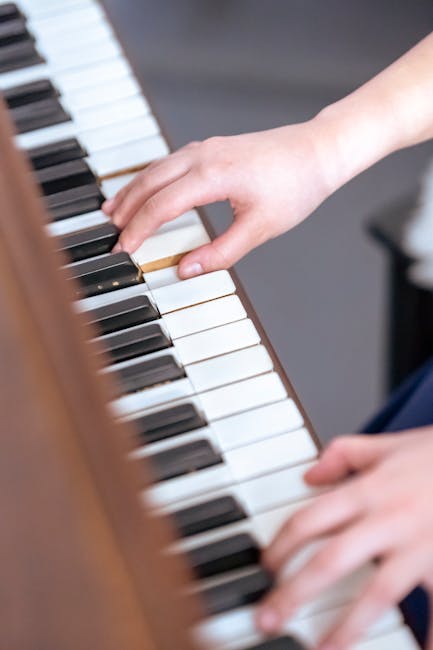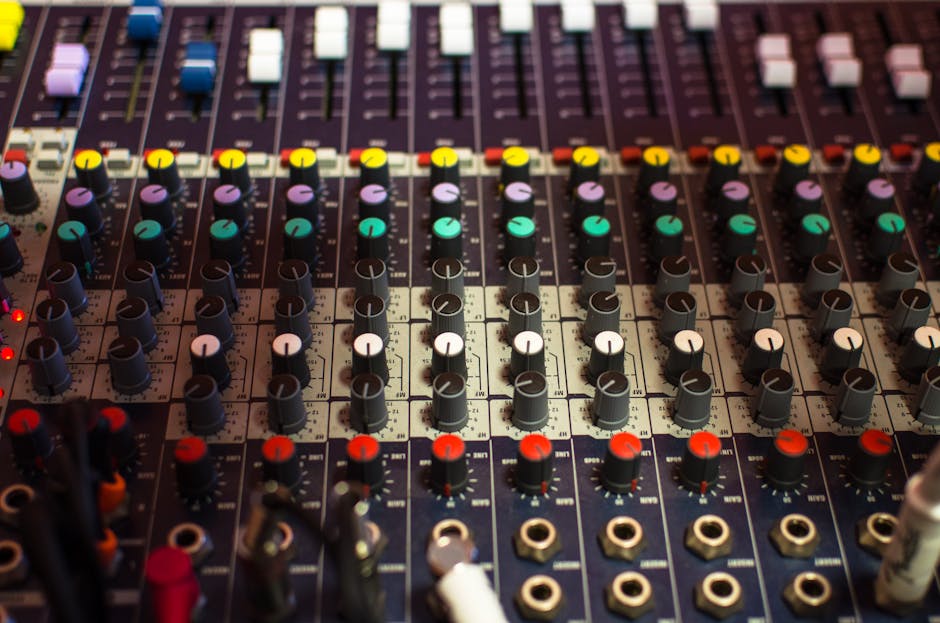Welcome, aspiring guitar gods and goddesses! Are you tired of strumming the same old chords and playing second fiddle to those fancy-pants singer-songwriters? Well, fear not my friends, for I have the key to unlocking your musical potential and unleashing your inner rockstar. Get ready to dig deep, shred hard, and discover the harmonious foundations of songwriting that will take your tunes from amateur hour to center stage. So grab your guitars, tune ’em up, and let’s dive into some essential tips that will have you composing hits faster than you can say “Stairway to Heaven”. Let’s rock and roll, baby!

Contents
- 1 Key Elements of Melody and Harmony
- 2 Crafting Memorable Chord Progressions
- 3 Exploring Different Song Structures
- 4 Using Dynamics to Enhance Emotional Impact
- 5 Incorporating Rhythm and Groove into Your Songs
- 6 Techniques for Lyric Writing and Storytelling
- 7 Collaborating with Other Musicians for a Well-Rounded Sound
- 8 FAQs
- 9 —
- 10 Wrapping Up
Key Elements of Melody and Harmony
Melody and harmony are like the peanut butter and jelly of music – they go hand in hand and make a delicious musical sandwich. So, let’s break down the key elements of these musical essentials.
First up, we have melody. Think of melody as the catchy hook that gets stuck in your head and won’t leave you alone. It’s the part of the music that you find yourself humming in the shower or tapping your foot to on the bus. A good melody is like a good pun – simple, yet oh so effective. It’s a sweet treat for your ears that keeps you coming back for more.
Next, we have harmony. Harmony is like the unsung hero of music – it’s what gives depth and color to a melody. It’s the supporting actor that makes the lead shine even brighter. Harmony is all about finding the perfect balance between different notes and chords to create a beautiful musical blend. It’s like a perfectly mixed cocktail – sweet, sour, and oh so satisfying.
Together, melody and harmony create the magical world of music that we all know and love. They’re the dynamic duo that make up the backbone of every great song. So, next time you’re grooving to your favorite tune, take a moment to appreciate the incredible dance between melody and harmony that makes it all possible.
Crafting Memorable Chord Progressions
Picture this: you’re strumming away on your trusty ol’ guitar, trying to come up with a killer chord progression that will have everyone in the room nodding their heads in approval. But alas, every chord change you make seems to fall flat. Fear not, dear reader! is an art form, and with a little creativity and a dash of pizzazz, you too can become a chord progression master.
Here are a few tips to help you on your quest to crafting unforgettable chord progressions:
- Experiment with different chord inversions: Don’t be afraid to mix things up and play your chords in different positions on the fretboard. You never know what magic might happen when you flip a chord upside down!
- Try unconventional chord changes: Tired of the same old G-C-D progression? Mix things up by throwing in some unexpected chord changes that will keep your audience on their toes.
- Use dynamics to your advantage: Don’t just strum away at the same volume throughout your entire song. Experiment with playing softly and then building up to a crescendo to add some drama to your chord progressions.
Remember, is all about pushing the boundaries and thinking outside the box. So grab your instrument, let your creativity run wild, and get ready to wow the world with your one-of-a-kind chord progressions!

Exploring Different Song Structures
When it comes to song structures, there are so many possibilities to explore. From the classic verse-chorus-verse to more unconventional formats, the options are endless. Let’s dive into some unique song structures that will make your music stand out from the crowd.
One fun structure to try is the ABABCB format. This structure consists of two verses (A), a chorus (B), followed by a bridge (C), and then another chorus to round it out. This format keeps the listener engaged by alternating between the verses and chorus, with the bridge providing a nice break from the repetition. Plus, it’s just plain fun to say - ABABCB. Go ahead, try saying it five times fast!
Another interesting structure to experiment with is the AAAA format. This format is all about repetition, with four identical verses back-to-back. While it may seem simplistic, the AAAA structure can create a hypnotic effect that draws the listener in and leaves them craving more. Plus, it’s a great way to showcase clever lyricism and wordplay without the distraction of a chorus.
For those feeling extra adventurous, why not try the AABA format? This structure consists of two verses followed by a bridge, and then a return to the original verse melody. It’s a great way to build tension and drama in a song, while still maintaining a sense of familiarity for the listener. Plus, the AABA structure lends itself well to some epic key changes and dynamic shifts that will keep your audience on the edge of their seats.

Using Dynamics to Enhance Emotional Impact
Have you ever felt like your music is missing that extra emotional kick? Well, fear not my fellow musicians, because I’m here to introduce you to the magical world of dynamics! By mastering the art of dynamics, you can take your listeners on a wild emotional rollercoaster ride they won’t soon forget.
Here are a few tips on how to use dynamics to enhance the emotional impact of your music:
- Start soft, end loud: Build anticipation by starting your piece with a whisper and gradually increase the volume until you’re rocking out like a rockstar.
- Play with tempo: Speeding up or slowing down the tempo can dramatically change the mood of your music. Use this to your advantage to keep your listeners on their toes.
- Use silence to your advantage: Sometimes, the most powerful moments in music are the ones where nothing is being played. Don’t be afraid to let the music breathe and create tension with strategic pauses.
Remember, dynamics are not just about volume. They’re about creating contrast and drama in your music. So next time you hit the stage, don’t be afraid to play around with dynamics and watch as your listeners are swept away by the emotional impact of your music!
Incorporating Rhythm and Groove into Your Songs
Ever feel like your songs are missing that special something? Well, look no further than incorporating rhythm and groove into your tunes! Here are some tips to help you get your audience moving and grooving:
- Don’t be afraid to experiment with different rhythms – try mixing it up with some syncopation or unexpected accents to keep things interesting.
- Think about the instruments you’re using – a funky bassline or a snappy drumbeat can really add some groove to your song.
- Consider the tempo of your song – sometimes slowing things down can actually make the groove even stronger.
Remember, rhythm and groove are all about feeling the music. So next time you’re working on a song, don’t just focus on the melody or the lyrics – pay attention to how everything fits together rhythmically. Your audience will thank you for it!
Techniques for Lyric Writing and Storytelling
When it comes to crafting compelling lyrics and stories, there are a few tried and true techniques that can help you captivate your audience and keep them hooked from start to finish.
First and foremost, **use vivid imagery** to paint a picture with your words. Think about the senses – what does your story smell like, taste like, sound like? Don’t be afraid to get creative and let your imagination run wild.
Another essential technique is **creating relatable characters** that your listeners or readers can empathize with. Give your characters quirks and flaws, make them feel like real people that your audience can root for (or against).
And last but not least, **play with structure** to keep things interesting. Experiment with different rhyme schemes, switch up your song’s tempo, or try telling your story out of chronological order. The possibilities are endless!
Collaborating with Other Musicians for a Well-Rounded Sound
When it comes to creating music that truly stands out, collaborating with other musicians is key. It’s like adding different spices to a dish – you never know what unique flavors will come together to create a masterpiece! Plus, it’s a great excuse to hang out with other cool and talented people.
One of the best things about collaborating with other musicians is the opportunity to learn from each other. Whether it’s picking up new techniques, gaining inspiration from their creative process, or simply discovering new music genres, you’re bound to expand your musical horizons.
And let’s not forget about the magic that happens when you bring together different musical styles. Imagine blending smooth jazz with heavy metal, or fusing reggae with classical piano. The possibilities are endless! Who knows, you might just stumble upon a new sound that blows everyone away.
So, don’t be afraid to reach out to other musicians and embark on a musical adventure together. Who knows, you might just end up creating the next big hit that has everyone grooving along!
FAQs
Why is harmony important in songwriting?
Well, harmony is like the peanut butter to the guitar’s jelly. It adds depth, richness, and flavor to your songs. Without harmony, your songs might taste as bland as a rice cake.
How can a guitarist create harmonious foundations in their songs?
Imagine you’re building a fancy house of cards. Start with a solid chord progression as your base. Add in some melodic lines and voilà, you’ve got yourself a harmonious foundation!
What are some essential tips for crafting catchy melodies on the guitar?
Think of crafting melodies like making a delicious sandwich. You need a tasty chord progression as the bread, and then add in some spicy guitar licks and catchy riffs as the filling. Don’t forget the mustard!
How can guitarists incorporate unique harmonies into their songwriting?
Don’t be afraid to experiment! Try out different chord inversions, add in some unexpected intervals, and throw in a sprinkle of dissonance for extra flavor. Your songs will thank you for it.
Any advice for guitarists struggling to come up with harmonious ideas?
When in doubt, steal from the best! Okay, maybe not steal, but borrow ideas from your favorite songs. Mix and match different elements until you find a harmonious blend that sounds uniquely you. Happy songwriting!
—
Wrapping Up
And there you have it, aspiring guitarists! With these essential songwriting tips, you’ll be well on your way to crafting harmonious melodies and captivating lyrics. So grab your guitar, pick up your pen, and get ready to rock the music world with your creativity and talent. Remember to have fun with the process, experiment with different chords and progressions, and most importantly, don’t be afraid to let your unique voice shine through in your songs. Happy strumming!



